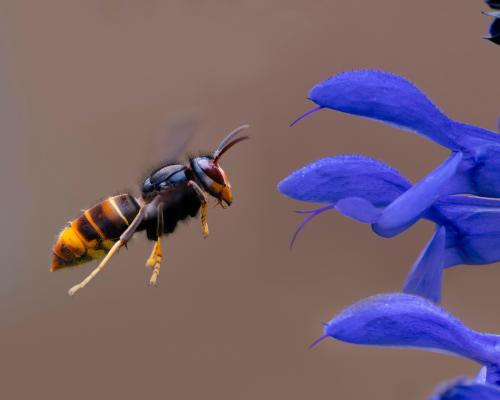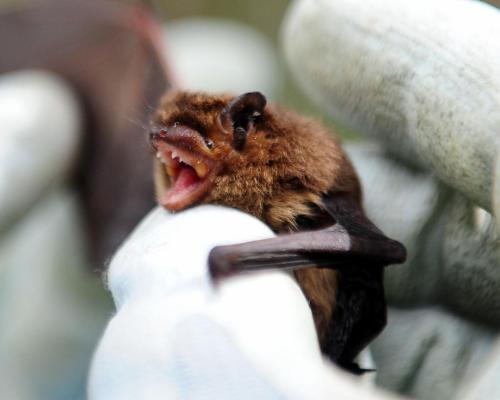
Asian hornets buzz at a unique frequency that could be the key to controlling their spread, scientists have found, as the invasive species experiences a record year in the UK.
Researchers have said this is “great news”, as the hornet nests can now be more quickly found and distinguished from those of other species, meaning their threat to bees and other pollinators could be contained.
Vespa velutina dismember and eat bees, and have thrived in France, where they have caused concern because of the number of insects killed. They sit outside honeybee hives and capture bees as they enter and exit, and chop up the smaller insects and feed their thoraxes to their young. Just one Asian hornet can hunt down and eat 30 to 50 honeybees in a day.
Their numbers have soared in recent years in the UK. There were 57 sightings in 2023, more than double the previous seven years combined, and 2024 broke that record with 71 confirmed sightings.
This year, that number has already been surpassed; the National Bee Unit is reporting 73 Asian hornet sightings and 28 nests in 2025 to date – more than double the 28 recorded sightings in the same period last year. The large wasps overwintered in the UK for the first time in 2023-24, which means they could be in the country for good.
Scientists, beekeepers and the government have battled hard to keep hornet numbers down, running a national hornet-spotting campaign so their nests can be identified and destroyed. But despite this, their numbers continue to increase, putting native pollinators at risk.
Now, scientists at the University of Southampton have made a breakthrough, establishing for the first time the frequency and volume of the sound from their nests. This means detection and removal of the creatures could become faster and easier.
They have established the fundamental frequency of Asian hornet nests to be 125 hertz and the loudness in the region of 51 decibels, which is comparable to a normal conversation.
The new research means the sound can be used to distinguish them from the nests and hives of other wasps and bees. This will be particularly useful in September and October, when the nests peak.
Acoustic engineering graduate Sophie Gray, who undertook the research, said: “We observed and measured two Asian hornet nests and a European hornet nest in Jersey before they were destroyed. We found that the fundamental frequency is 125 hertz and that the nest can be detected from about 20 metres away with a directional microphone.
“We also recorded European hornets and honeybees to determine if we can differentiate the frequency. The fundamental frequency of the European hornet is about 110 hertz and honeybees about 210 hertz. It was great news to discover that the frequency is unique for each species, so they are distinguishable.”
The species first came to Europe in 2004, when the hornets were spotted in France, and it is thought they were accidentally transported in cargo from Asia. They have since spread rapidly across western Europe.







